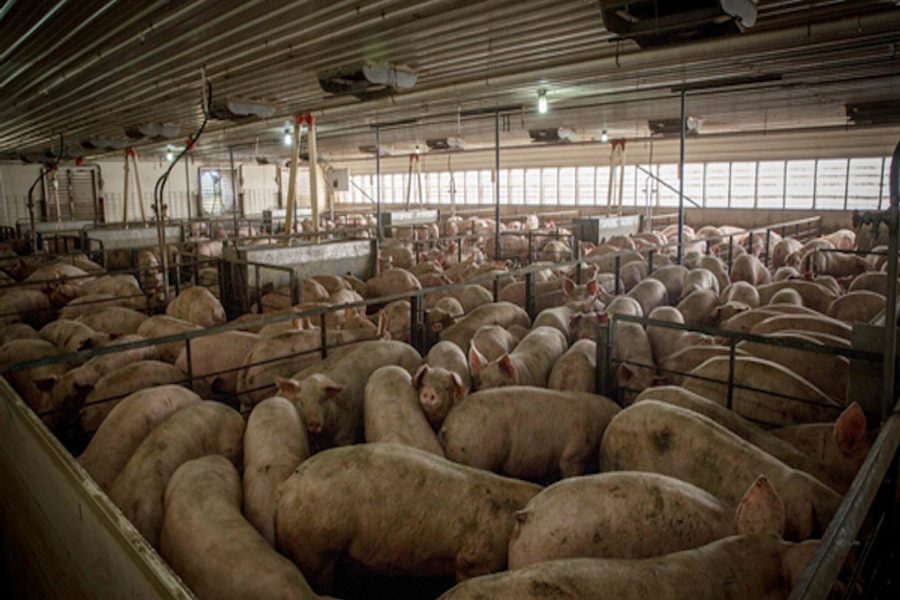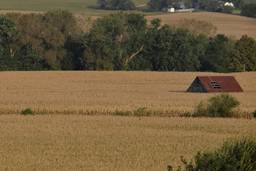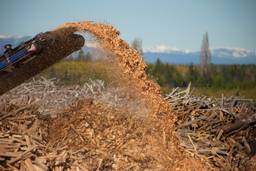Rural Communities Look to the Past to Defeat the Industrial Agriculture of the Present
John Ikerd

People in rural communities are beginning to join forces to defend their health and well-being against the inherent threats posed by concentrated animal feeding operations (CAFOs). I believe that the future leadership of rural America is emerging from among those who are taking the lead in protecting their communities against CAFOs, and I am just beginning to appreciate the importance of the new relationships that are being forged among rural people who share this common concern for the future of their communities.
Over the past year, I have met with local anti-CAFO group in Arkansas, Nebraska, Missouri, Iowa, South Dakota, and Ontario, Canada. Each group is different but they all of have one thing in common: they are all creating “communities of necessity.” Most of these folks didn’t form these new relationships because they wanted to. They got together with neighbors because they felt they had to. They knew they would have to work together if they were to have a chance to protect themselves, their families and their communities from the threats of CAFOs.
Rural America once had strong communities. It would have been very difficult for anyone who built a CAFO in a rural area in earlier times. It wasn’t socially or morally acceptable for one person in the community to benefit at the expense of others. Rural people were also very skeptical of “outsiders,” such as the corporations that are promoting CAFOs. They understood that more often than not, “outside investors” were intent on taking advantage of the “local yokels.” The strong communities of earlier times were created out of necessity and over time became important keepers of rural social and cultural values.
When I was a kid growing on a small dairy farm in southwest Missouri, I lived in a strong farming community. The community was an interwoven network of people who knew each other mainly out of necessity. Most farms in those days couldn’t actually be farmed by a single farmer or farm family. Farming was a community affair. For example, there were crews, some up to four men and boys, who traveled from farm to farm to fill silos. Each farmer brought along with their share of farm equipment and labor. For my dad, it was mostly labor — as there were three growing boys in the family. In the early days, the traveling threshing crews followed a steam engine that pulled and powered the threshing machine. The haying crews tended to be smaller because there was less equipment involved, but it still took a crew to put up hay. The men and boys worked hard, but a lot of socializing — horsing around — also took place at these gatherings.
The “farm wives” also renewed their community connections at time of harvest. Several women and girls would gather at the host farms on harvest days to help the host housewife prepare the noon meal for the harvest crews. The farm women also had their individual groups who gathered periodically to make quilts to keep their families warm in winter and to help each other can fruit and to make preserves or cut up meat and make sausage on butchering days. The work was often tedious and tiresome but the conversations helped to pass the time.
These networks of necessity were interconnected through local churches. Everybody knew everybody in their own churches as well most folks as in the others churches nearby. The parents of kids who went to school together all knew each other. Visiting on Sunday wasn’t limited to kinfolks; visits included neighbors. People also visited at the country store and at the barber shop, filling station and farmers’ cooperative exchange in town.
“Giving someone a hand” wasn’t limited to helping out in emergencies, but was given anytime someone “needed a hand.”
These communities, created out of necessity, were communities that not only helped rural people make a living but also gave them a common sense of purpose. Relationships are difficult and disagreements naturally arose. But, rural folks knew they needed to get along to get by in life. Furthermore, this strong sense of community added a sense of meaning and quality to day-to-day rural life.
But “times changed” in rural America. The industrialization of agriculture removed the necessity for community-based farming. Individually owned field choppers replaced the big silo crews, individual combines replaced big threshing crews, and inexpensive hay balers replaced haying crews. Farmers were free to harvest their own crops whenever they choose, rather than wait their turn to be helped by the big crews of neighbors. Modern kitchen conveniences also eliminated the need for farm wives to share housework.
Social circles in farming communities began to narrow and narrowed further as farms grew larger and surviving farmers became fewer. New people moved into rural areas — seeking low-paying jobs on factory farms or escaping high living costs in cities. Most people didn’t bother to get to know their new neighbors because they “didn’t need to.” Rural folks eventually became like city folks — not only not knowing, but not really wanting to know their neighbors.
This loss of community left rural communities vulnerable what I call the “economic colonization” of rural America by the large agribusiness corporation. The comprehensive corporate contractual arrangements that characterize CAFOs are the epitome of rural economic colonization. The ongoing ecological, social, and rural economic degradation of rural communities are the inevitable consequences of economic colonization.
However, people in rural America are beginning to awaken to what they have sacrificed in the name of independence and economic efficiency. The threat of factory farms or CAFOs moving into a community has proven to be a powerful motivation for people to think about what they are about to lose – if they become a CAFO community. They are also beginning to understand if they are going to protect themselves from the threats of CAFOs, joining forces with neighbors to regain the power of community is an absolute necessity. They are just beginning to realize that forming and sustaining relationships with others, regardless of necessity, also is simply a better way of life.
There are still many places in rural America that have the possibility of creating and sustaining socially vibrant and economically viable rural communities. These communities still have clean water, clean air, scenic landscapes, and people who are committed to caring for the land and care about other people — even if they don’t know each other very well. If these communities are able to protect themselves from CAFOs and other forms of economic colonization they will be even better places to live in the future.
There is no economic or political power greater than the power of the people in community. While the power of community may be gained through relationships of necessity, it can only be sustained through “relationships of choice.” We eventually must come to understand that we social beings — relationships, regardless of necessity, make our lives better.
(“Rural Communities of Necessity” was originally published on John Ikerd’s website and is reposted on Rural America In These Times with permission. For more information about CAFOs, and the threats they pose to rural communities and economies, click here.)








